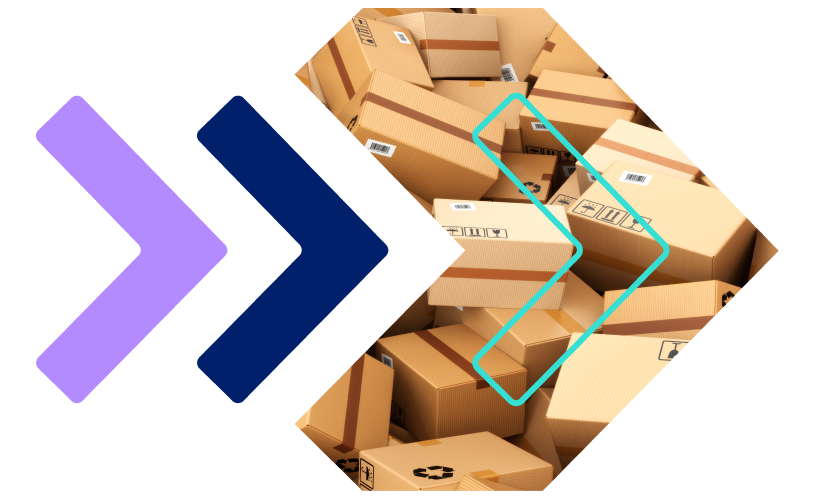Amazon is frequently referenced as a force of logistics disruption. But it has also cultivated the growth of one of the most lucrative international freight target markets.
Small and midsize businesses may not have been logistics providers’ core target but this article will show how technology first grew the sector and is now making it accessible to logistics providers.
Small Is Now Big
Small Business E-commerce Sales
Consumers have shifted over to digital sales, with Amazon is at the lead.
Amazon is responsible for 43% of all US e-commerce sales, with over half of all US households holding Amazon Prime memberships.
What many buyers don’t realize is that in most cases, they’re not buying from Amazon. Half of all Amazon retail sales are made by third-party vendors. Last year, for instance, over 140,000 companies sold $100,000+ of goods on Amazon, with 22% of all US e-commerce sales were by small and midsize businesses selling on the Amazon Marketplace.
Sales reach is getting easier…and so is fulfillment. Fulfilled By Amazon, Amazon’s warehousing and delivery services, launched in September 2006. It now fulfills billions of items every year. This transformed warehouse management and fulfillment into a completely seamless experience for small retailers and encouraged more business to get into the act.
Small Business International Sourcing and Importing
The next step was easier sourcing, pushed by platforms like Alibaba, as well as a growing number Asian companies that help Western companies design and source the perfect product. With easier importing, easier fulfillment, and easier digital sales, a surge in small business imports was inevitable. One prime example of the ease of creating a product, building a brand, and going global is the proliferation of direct-to-consumer brands like Warby Parker, Casper, Bonobos, and the Dollar Shave Club.
As a result, in 2015, small businesses with under 20 employees were responsible for nearly 12% of all identified US import value. And companies with under 500 employees account for 32% of the value of US imports.
Recent trade tariffs notwithstanding, obstacles to trade are falling, making it easier than ever for small companies to go global.
The driving force for this small importer growth is radically improved access to sourcing and importing. Nathan Resnick, the CEO of product sourcing company Sourcify, affirmed how easy bringing a product and store to life now is in a recent Freightos interview:
“The ease of bringing a product to life and growing an eCommerce store isn’t that hard. You use the tools like Sourcify to manufacturer the product, Freightos to bring the products into the U.S. or to warehouse, wherever it may be. And then you can sell through these platforms like Amazon, Ebay or start your own Shopify store.”
Nathan Resnick, the CEO of product sourcing company Sourcify
The Shift to Asian Retailers
While easier access jumpstarted a generation of small Western importing businesses, the Chinese dragon is rearing its head.
International manufacturers, particularly those based in Asia, saw how easily their vendors could sell on Amazon and began to emulate. Chinese vendors are increasingly using Amazon to stretch across the Pacific and sell directly to consumers. Four of the top sellers on Amazon’s top ten list (AnkerDirect, Fintie, Sunvalley Brands, and JEDirect) are direct-to-consumer brands based in China. The sheer number of Chinese sellers is astonishing.
In 2017, some 250,000 Chinese vendors signed up to sell on the Amazon Marketplace. That’s more than the total number of US importers in 2015.
But Freight Is Still Hard For Small Business
Despite the explosive growth in small business imports, for smaller businesses international freight is still an uphill battle.
Freightos’ annual survey of how the top twenty global logistics providers quote online paint a bleak picture. Last year, the average spot freight quote time was about 3 days, with a 30% spread in pricing.
A recent Freightos survey across 500 small US businesses that regularly import or export, found that over half of smaller importers spend in excess of $10,000 monthly on freight, making them sizable sales targets. It takes time too; nearly half of all companies spend over two hours (or an estimated $100 of labor) managing every individual shipment. Meanwhile, most companies report that less than 75% of their shipments are fulfilled on time.
The technology experience is also lagging, with 30% of importers reporting that their freight providers are less advanced than their other service providers. Just 12% thought the opposite.
Shipment management is still largely a manual task.
Nearly 50% of all importers (47% to be exact) still use spreadsheets.
Even large importers (over 100 shipments a year) use spreadsheets in some 40% of cases. Meanwhile, despite the proliferation of web solutions, less than 10% of importers use a SaaS solution for shipment management.
Explaining The SMB Service Gap
So why is that SMB freight experience lags? Because (to date) it’s been really hard to do it at scale while still making money.
Selling to small businesses doesn’t scale
Selling to larger customers is fairly straightforward in the logistics industry. Sales teams gather a Rolodex of contacts, and wine and dine them.
But small businesses are more difficult to sell to, requiring higher touch to an unacquainted audience that doesn’t know the right questions to ask. With fewer shipments per customer, small business sales and setup can take up the same time as for large businesses, but not the same ROI.
Small businesses aren’t as sophisticated
When working with large customers, forwarders can rely on a certain degree of freight knowledge, typically working with logistics professionals on the BCO side. This sophistication is lacking in small businesses, meaning hours of education and more time required servicing their shipments.
Digital Transformation Is…Changing Everything
It’s no surprise that the top priority on Maersk’s digital transformation list is to:
“Build a natively digital one-stop-shop for container logistics and predominantly engage our customers through this online channel.”
The down-market opportunity is sizable and with the right technology, it can be done, representing a fundamental shift in sales behavior. This trends is echoed by a Freightos survey conducted in 2017 on the freight customer experience. According to the research, forwarders are acutely aware of the importance of the customer experience and believe that the importance of price as a deciding factor will drop as customer service improves, mostly from service automation.
The proof?
Not a month goes by where a forwarder doesn’t announce new digital services to enhance booking or visibility for customers (both K+N and Expeditors launched platforms this month already…and we’re only a week in).
Whether it’s Amazon, Alibaba, Maersk, or forwarders like Agility and DHL Global Forwarding bringing freight services online, as the small and midsize importer pie grows, expect more companies to reach out for a slice.



